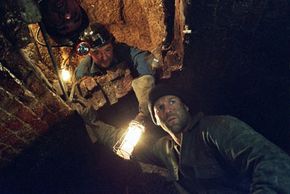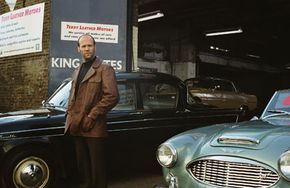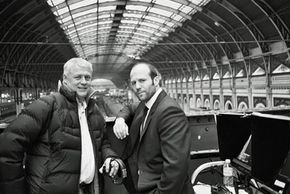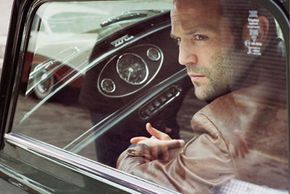Here's the backstory, as cobbled together by Dick Clement and Ian La Frenais. The thieves were a bunch of small-time hoods that had been put up to the bank robbery by a beautiful acquaintance. The masterminds of the plot, however, were actually agents in MI5, the British counterintelligence service. They wanted to get their hands on a safe deposit box owned by a Trinidadian gangster named Michael X -- because it contained candid sex photos of a member of the royal family.
The heist became known as the "Walkie-Talkie Robbery" because the burglars communicated via two-way radio, and a ham-radio operator caught their conversations on tape as the crime was in progress. He called the police, but they couldn't pinpoint the location -- and there were 750 banks in the search radius. So the thieves fled with their booty, and the crime was discovered at the open of business the next morning.
Naturally, the robbery was front-page news, but all coverage suddenly stopped after three days. Apparently, a "D Notice" -- a cease-and-desist order from a high level in the government -- had been issued on the story. "There was no freedom of information act in Britain," notes La Frenais. "Everything that was in the paper just disappeared."
Nine years ago, producer Lawrence Bender brought the story to Clement and La Frenais and introduced them to a journalist named George McIndoe, who knew some of the robbers. Intrigued, they dug deeper and began piecing together facts and evidence.
The writers had a lot of blanks to fill in for their screenplay. They knew that Michael X had, at one point, been jailed for murder and released. "He walked without a trial or anything. It may be because he had these photographs," says La Frenais. The film hints that the scandalous photos were of Princess Margaret, the queen's sister.
"Princess Margaret … definitely did hobnob with some very dubious individuals. She was a party girl," director Roger Donaldson says. But the truth about the photos can't be corroborated because all documents pertaining to Michael X are sealed until 2054.
Clement and La Frenais knew that more than 100 of the safe deposit box owners hadn't stepped forward to identify themselves, so they guessed that many of them were probably shady characters -- including a pornographer and a brothel madam who may have had pictorial evidence of prominent clients. They incorporated these characters in the plot alongside others they invented. Martine, the woman who set up the crime (played by Saffron Burrows) became the catalyst for the heist.
"George [McIndoe] talked about a beautiful call girl from the East End," La Frenais says. The writers made her the link between the thieves and MI5.
"We knew there was a woman involved; it was in the papers," adds Clement. "We thought it made sense that she was the one who recruited them."
The original script had a fairly humorous tone, but Clement says it "got darker and darker as it progressed. It was clear that these guys were out of their depth." Producers Charles Roven and Steve Chasman got hold of it and sent it to Donaldson. The Australian director jumped at the chance to make a period heist movie in London but requested less comedy. "He wanted to make it a thriller in the vein of 'No Way Out,'" Chasman says.




